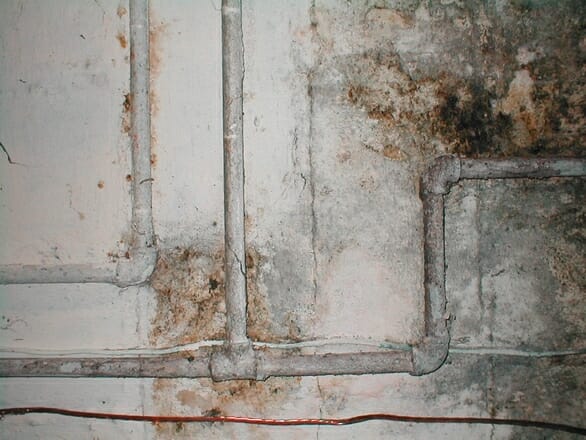Most people in modern homes will never have to deal with galvanized pipework issues. In the past, galvanized pipes were used in almost all home plumbing applications, and owners of older homes may have galvanized plumbing in their homes. While this material was readily used, there is a problem with galvanized pipes; they can react with minerals in the water supply and cause problems, such as lowered water pressure, clogged drains and a reduced water quality. Let’s take a closer look at why this occurs and if the problem can be easily fixed.
Why do Galvanized Pipes Fail?
As the water passes through the galvanized pipes, a reaction takes place that causes the pipes to corrode internally. This can happen over an extended period of time, and it may be very noticeable in older properties. The corrosion will introduce material into the water passing through it that will reduce the quality of the water. The water pressure may drop because cracks and water leaks will occur. Finally, in extreme cases, the corrosion will contribute to blocks and clogs that inhibit the flow of water.
Are Galvanized Pipes Fixable?
The short answer is a cautious yes. It may be the case that only a short section of pipework is affected and this can be repaired or replaced. If this is the case, the following steps should be carried out in order.
1. Turn Off the Water;
The water supply to the home must be turned off first using the water shut off valve. This will ensure that you don’t have a rush of water at the area you want to replace or repair. The valve should be easy to find and knowing where it is located is vital for dealing with many plumbing emergencies.
2. Examine the Pipes;
The galvanized pipe section that requires attention should be examined before any repairs are attempted. It is also important to check the condition of nearby pipes for signs of corrosion or leaks. If the situation looks bad, it may be a better idea to consult your local plumber and get an estimate for installing replacement pipes in your home.
3. Carrying Out a Repair/Replacement;
Remove the section of galvanized pipe that is damage by cutting each end with a reciprocal saw. Then screw a female PVC or PEX fitting onto each end of the remaining pipe sections. Carefully measure a section of PVC or PEX plumbing pipe and install it into the new fittings. Finally, brush a waterproof sealer over the fittings to prevent leaks.
Galvanized pipe can also be repaired using a dialectic union or brass adapter to prevent electrolysis if galvanized pipe can be unscrewed from closest connection. This is the most common repair.
In Summary:
Identifying and fixing small sections of damaged galvanized pipework in your home is possible. The level of skill required to carry out this kind of repair is well within the capabilities of the average weekend DIYer. If you’re extremely lucky, the damage will only be present in this small easy to repair area in your home. It should be understood that this in not very likely and there may well be other areas that require attention. Longer sections of galvanized pipe will be harder to repair, and over time multiple repairs may be required. In most instances, it is a more cost effective solution to simply have the galvanized pipes replaced with a more modern system by a
professional.
By Giovanni Longo President Flood Brothers Plumbing
Giovanni Longo is a 3rd generation master plumber who has been practicing his craft and trade in the greater Los Angeles area for well over a decade and a half. A plumbing and hydraulics-engineering innovator, Giovanni’s particular world-class expertise focuses on dealing with challenging sewer system designs as well as resolving complex commercial and residential draining issues. As a certified Flood Mitigation expert, he is also well versed in a wide variety of water damage and remediation solutions.





